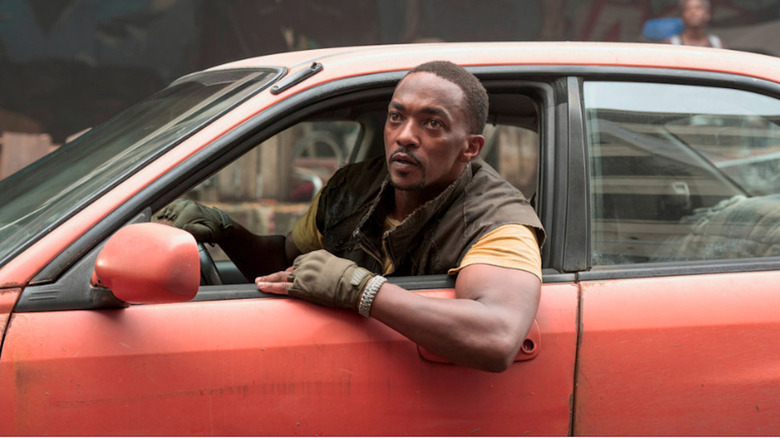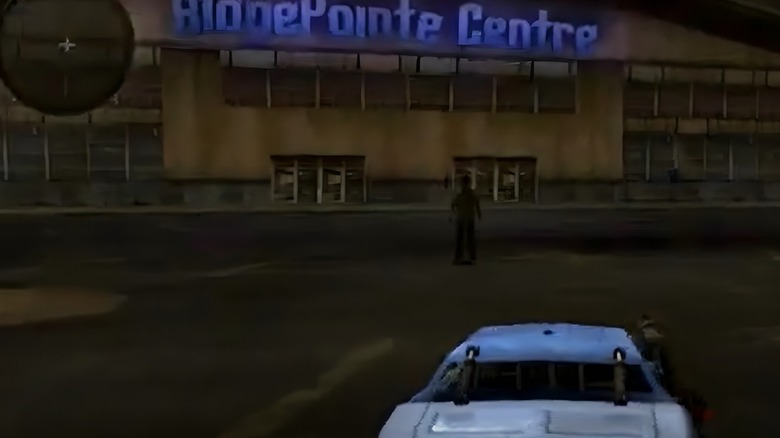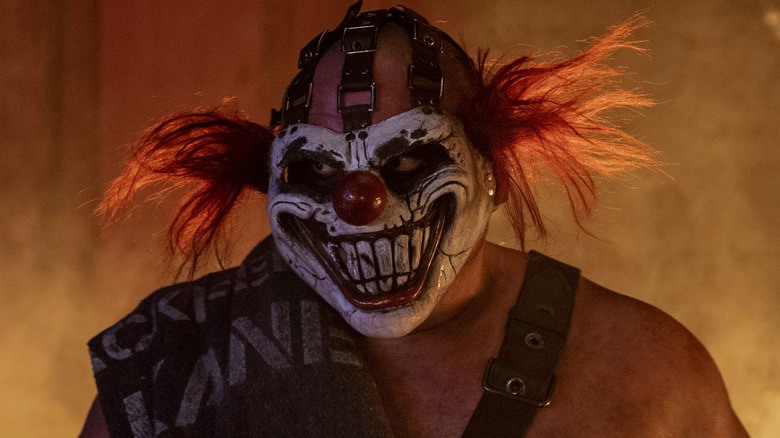Twisted Metal: Episode 1's Reference To The Games' Wildest Level Explained
Contains spoilers for "Twisted Metal" Episode 1
The creators of Peacock's "Twisted Metal" series took on a mammoth task when bringing the video game franchise to the screen. On one hand, they had to come up with a concept that fleshed out a franchise that's quite light on lore and in-depth storytelling. At the same time, they had to be conscious of the games' fans, who will head into the series looking for Easter eggs and references at every turn. Fortunately, Michael Jonathan Smith's adaptation features callbacks to the source material from the get-go.
Episode 1 opens with John Doe (Anthony Mackie) speeding through a mall while trying to evade gun-toting thugs who want to steal his cargo. After successfully surviving the bullet storm, Doe drives his vehicle through the shopping center's exit and goes about his day. However, the mall in question will be a familiar sight to "Twisted Metal" fans.
The RidgePointe Centre appears in the "Suburbs: Midtown Suburbs" level of "Twisted Metal: Black." This level is regarded as a favorite among many fans of the games, who'll no doubt get a kick out of seeing it referenced on the Peacock series. Then again, some viewers who are familiar with "Twisted Metal: Black" might think the adaptation is a little bit tame.
Twisted Metal: Black's suburban mission is pure chaos
The "Suburbs: Midtown Suburbs" mode is a perfect example of the wild adventures that players get to embark on in "Twisted Metal: Black." Most people associate the suburbs with idyllic safety, but in this world, they only exist to be destroyed in the throes of vehicular combat. So, what makes this mode so chaotic?
"Midtown Suburbs" boasts a simple enough premise. The player must overcome eight enemies in a suburban demolition derby, and there are several ways to take them out of the equation. For example, there's a giant rolling Ferris wheel that can be used to crush enemy drivers, as well as an environmental superweapon that's capable of summoning lightning bolts to destroy opponents.
Furthermore, no building is off-limits when it comes to blowing things up, which is why many fans love this level. This is the view of Redditor u/kenubinin, who wrote, "The Suburbs (TMB) is awesome! You can smash an entire neighborhood using a Ferris wheel, set fire to the woods, explode a church, and you get one of the best vehicles in these games there." Most video game developers resist the urge to make destroying churches an option for players, but "Twisted Metal: Black" is wilder than most titles.
The Peacock series is more lighthearted than Twisted Metal: Black
While many long-term gamers will be happy to see the Peacock series reference "Twisted Metal: Black," some viewers might long for something more tonally aligned with the source material. The "Suburbs: Midtown Suburbs" level takes place at night, whereas "Twisted Metal" Episode 1 boasts a sunny daylight setting. And while John Doe has no problem causing chaos in the RidgePointe Center, he doesn't blow up any hospitals or churches.
Of course, making the series as dark as "Twisted Metal: Black" might be off-putting to general viewers. While the Peacock adaptation certainly packs a punch with its grislier moments, it's quite comedic, fun, and over the top. "Twisted Metal: Black," meanwhile, fully embraces the franchise's horror influences and ignores its campier elements in favor of pure darkness. For example, Sweet Tooth is presented as a truly twisted and demented serial killer in the game. However, the Peacock adaptation depicts him as an artistic maniac who listens to Sisqo.
"Twisted Metal" might not honor the spirit of some of the games' more twisted levels. That said, Episode 1's callback to "Midtown Suburbs" proves that the show's creators are more than familiar with them. After all, the show's "RidgePointe Centre" even includes the source material's British spelling, proving that the creators are eagle-eyed fans of the games in their own right.


